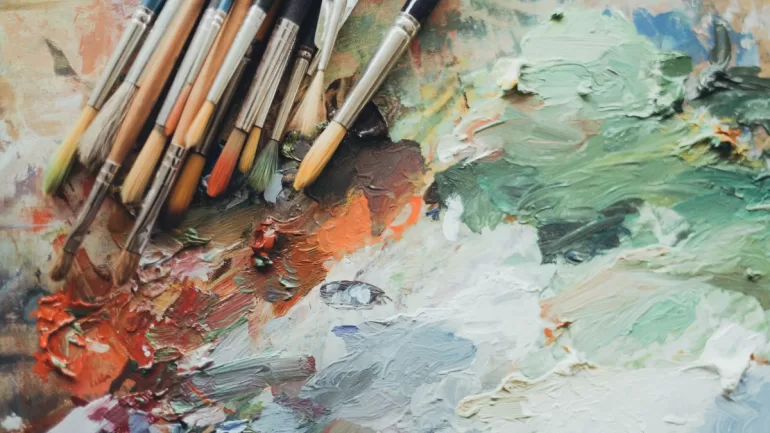ART & DESIGN
Literature leaps to life in four famous artworks inspired by timeless classic novels, blending words and brushstrokes in unforgettable ways.
BY EMMA RADEBAUGH, ARTCENTRON
Explore Famous Artworks Inspired by Timeless Classic Novels
If you’re a fan of both literature and art, then you know the magic that happens when the two worlds collide. It’s not just about book covers or illustrations; it’s about entire works of art that breathe new life into stories we thought we knew.
Let’s explore four famous artworks inspired by timeless classic novels. These artworks show how artists translate the written word into powerful visual storytelling.
The Lady of Shalott—Waterhouse
John William Waterhouse’s The Lady of Shalott is a lush, romantic painting inspired by Alfred Lord Tennyson’s poem of the same name, which reimagines the Arthurian legend. With roots in poetry, the themes mirror those in Idylls of the King. This reflection has long been embraced as a literary classic.
Waterhouse’s 1888 work captures the exact moment the cursed Lady leaves her tower, doomed to die for glimpsing the world beyond her mirror. Draped in white, surrounded by symbolic objects, and floating down a river toward her fate, she represents longing, isolation, and fatal beauty.
Beloved—Joe Overstreet
Joe Overstreet’s Beloved pays tribute to Toni Morrison’s Pulitzer Prize–winning novel of the same name. Overstreet’s abstract style doesn’t try to illustrate Morrison’s story literally. It instead evokes the emotional trauma and historical weight that permeate the book.
The layering of textures and colors suggests memory, repression, and the struggle for spiritual and emotional freedom. This interpretation feels like a conversation with the novel, one that speaks of personal pain and collective history. No surprise, Beloved remains one of the must-read classics every library collection has on its shelves.
Ophelia—Salvador Dalí
Shakespeare’s Hamlet has inspired countless works, but Salvador Dalí’s surreal interpretation of Ophelia stands out. This 1967 piece combines the chaos of madness with Dalí’s signature dreamlike distortions. You won’t find a gentle brook or floating flowers here, but rather psychological strain, fragmented imagery, and eerie calm.
Dalí confronts us with something more abstract: the unraveling of identity. It’s one of many reasons this surreal work is considered a haunting response to one of literature’s most well-known characters.
Blue and Bookish—Kerry James Marshall
In Blue and Bookish, a fictional artwork inspired by Invisible Man by Ralph Ellison, we imagine how Kerry James Marshall might translate Ellison’s themes of identity, race, and invisibility into his bold, high-contrast portraits.
Marshall is famous for centering Black subjects in works historically dominated by white narratives. His hypothetical contribution includes layered symbolism, including books, shadows, and masks, embedded in a color palette rich with significance.
Even though this piece is fictional, its presence highlights how artists continue to respond to Invisible Man.
When Words Spark Brushstrokes
Artists have long looked to books to find meaning, conflict, and emotion worth translating to canvas. Whether it’s a Victorian heroine doomed by a curse or a modern meditation on identity and trauma, these four famous artworks inspired by timeless classic novels show how stories can leap off the page and take on new forms.
And if you’re feeling inspired to pick up a brush—or a book—maybe ask yourself, what novel would you paint?
